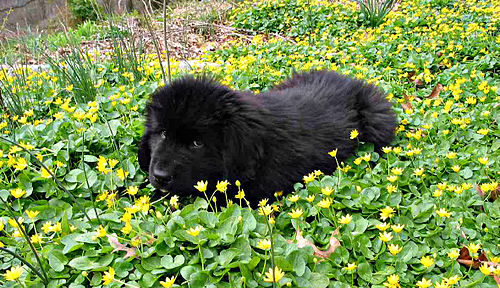
The Newfoundland is a large breed of working dog. They can be black, grey, brown, or black and white. However, in the Dominion of Newfoundland, before it became part of Canada, only black and Landseer (white-and-black) coloured dogs were considered to be proper members of the breed. They were originally bred and used as working dogs for fishermen in Newfoundland.
The Newfoundland breed was developed on the island of Newfoundland, which is now part of Canada. They were originally used by fishermen in the cold, coastal regions.
Newfoundlands are renowned for their incredible strength, gentle temperament, and swimming capabilities. They are often used in water rescue missions due to their natural swimming abilities and webbed feet. Their massive size and sweet nature make them both excellent working and companion dogs, but they require ample space and frequent exercise.


Newfoundlands typically have dark brown eyes, but lighter eye colors are common for the brown or grey coated

J. M. Barrie with his Newfoundland dog Luath, model of Nana.










Left to right, Black man York, Seaman, Lewis, Clark, Sacagawea, and her baby Pompey. Statue by Robert Scriver, in the Lewis and Clark National Historic Interpretative Center, Great Falls, Montana.




Trainability
Responsiveness to training: —/5